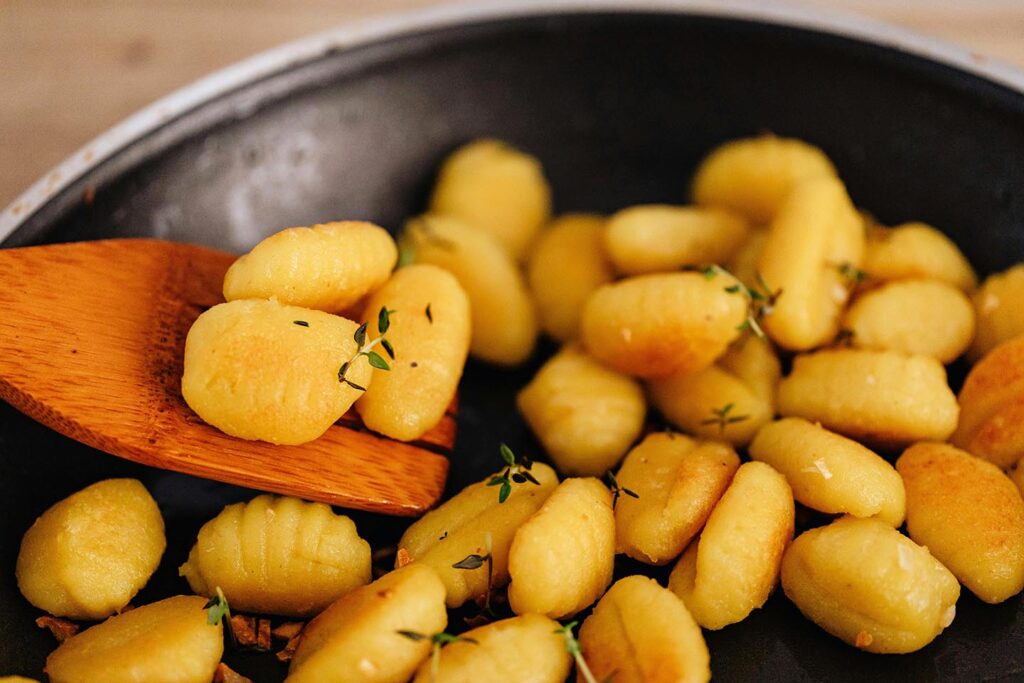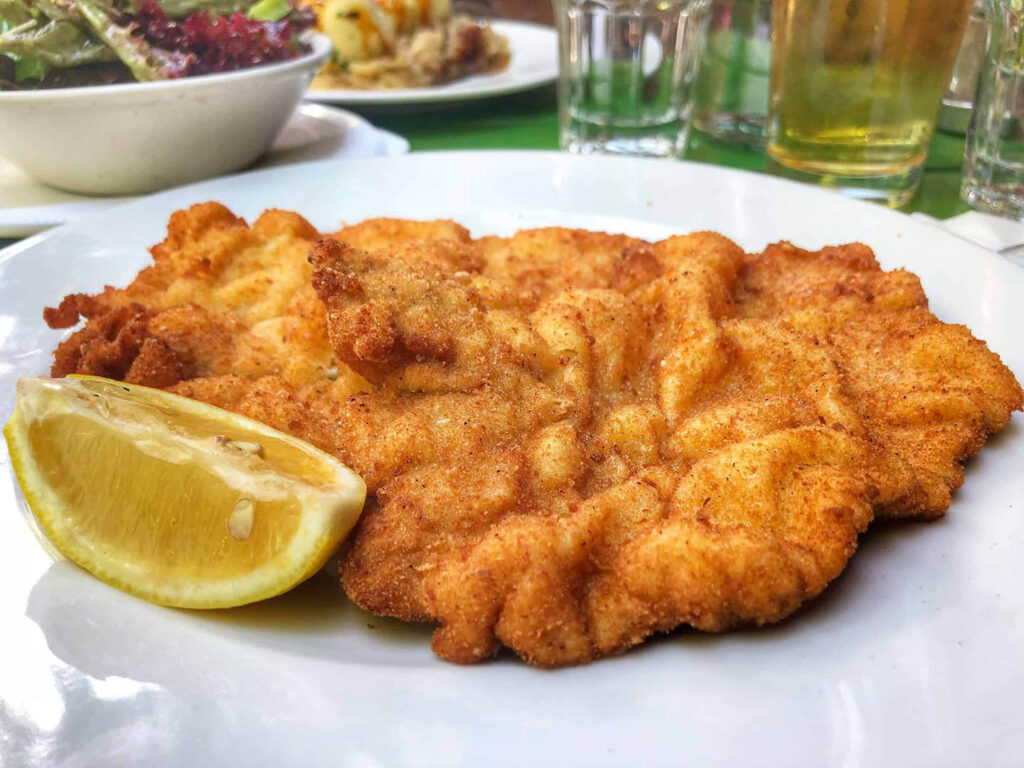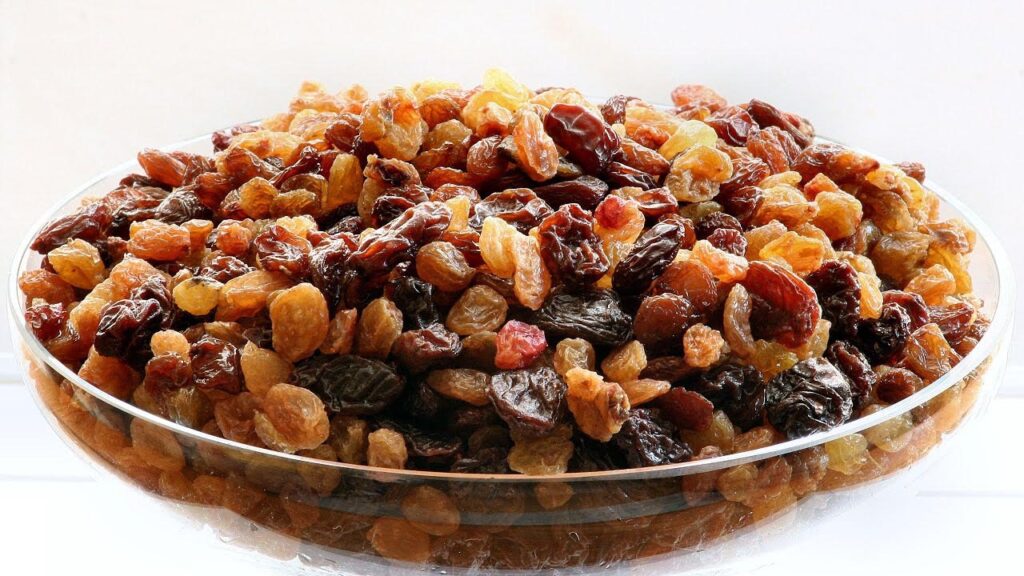
Raisins, sultanas, and currants are all popular varieties of dried grapes, each offering distinct flavors and characteristics. Raisins, which come from various grape types, are known for their larger size, dark brown or purplish hue, and a rich, sweet flavor. Conversely, Sultanas are made from specific grape varieties like Thompson Seedless, resulting in smaller, lighter-colored, golden or pale brown dried grapes with a sweeter and more delicate taste. Currants encompass two types: Zante currants, which are tiny, seedless grapes with a sweet and tangy flavor, and currants made from Black Corinth grapes, known for their intense, slightly tart profile.
All varieties are known for their sweet and slightly chewy texture and are a good source of dietary fiber, vitamins, and minerals, making them a healthy addition to your diet. These dried fruits find their way into a wide range of both sweet and savory culinary applications, adding unique and delightful flavors to various dishes and recipes. They are all popular and nutritious snacks, used in baked goods (such as fruitcakes, scones, cookies, cakes, breads, or pastries), added to savory dishes (such as rice pilaf or tagine), or included as part of the topping for cereals, yogurt, salads, and more.
What is the difference between the three?
Raisins, sultanas, and currants are all dried grape products but can differ in grape variety, size, color, taste, and regional naming conventions.
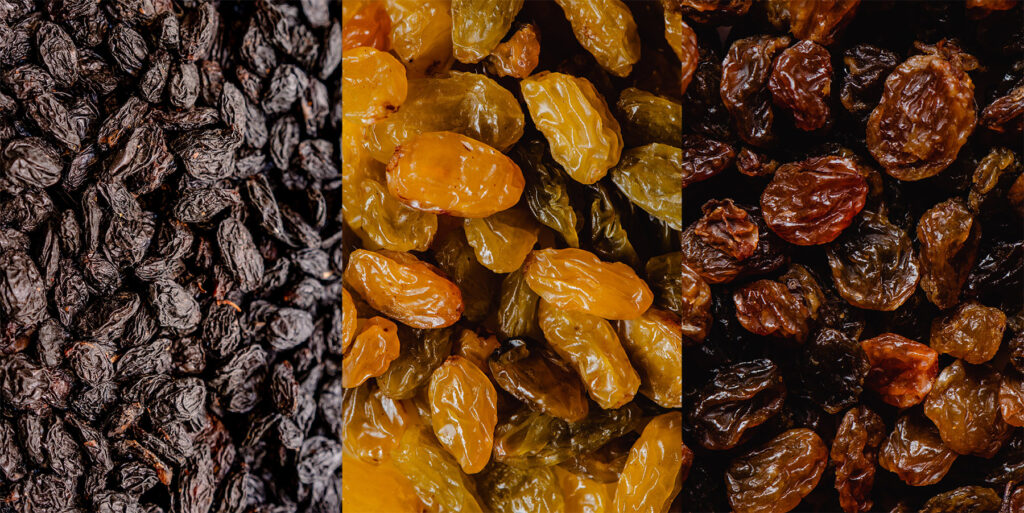
Raisins: Raisins are any variety of grape that has been dried in any manner (sun-dried or mechanically dried). During the drying process, the grapes lose moisture, which causes them to shrink and become smaller and sweeter. The natural sugars in the grapes become more concentrated as the water content decreases.
Sultanas: Sultanas are raisins made from seedless grape varieties that are allowed to dry naturally in the sun. The name ‘sultana’ is linked to the Sultan, the ruler of the Ottoman Empire and originates from Greece, Turkey, and Iran. Sultanas are usually made from Thompson Seedless grapes, which are smaller and sweeter than many other grape varieties commonly used to make raisins. Sultanas are typically lighter in color than other raisins and have a slightly tangy and more delicate flavor.
Currants: Currants are broken down into two different varieties: Zante currants and currants made from dried Black Corinth grapes.Zante currants, often simply called “currants,” are tiny dried grapes that come from the Black Corinth grape variety. These small, dark, and seedless currants are named after the Greek island of Zakynthos (Zante), where they were originally cultivated and exported. Zante currants are often used in baking, especially in recipes like fruitcakes, scones, and currant buns. They have a sweet and tangy flavor and are commonly used as a natural sweetener in various dishes.Currants from Black Corinth grapes are small, seedless, round, and dried to produce currants. Unlike Zante currants, often referred to as currants in many English-speaking countries, currants made from Black Corinth grapes are less commonly used and have a more intense, slightly tart flavor.
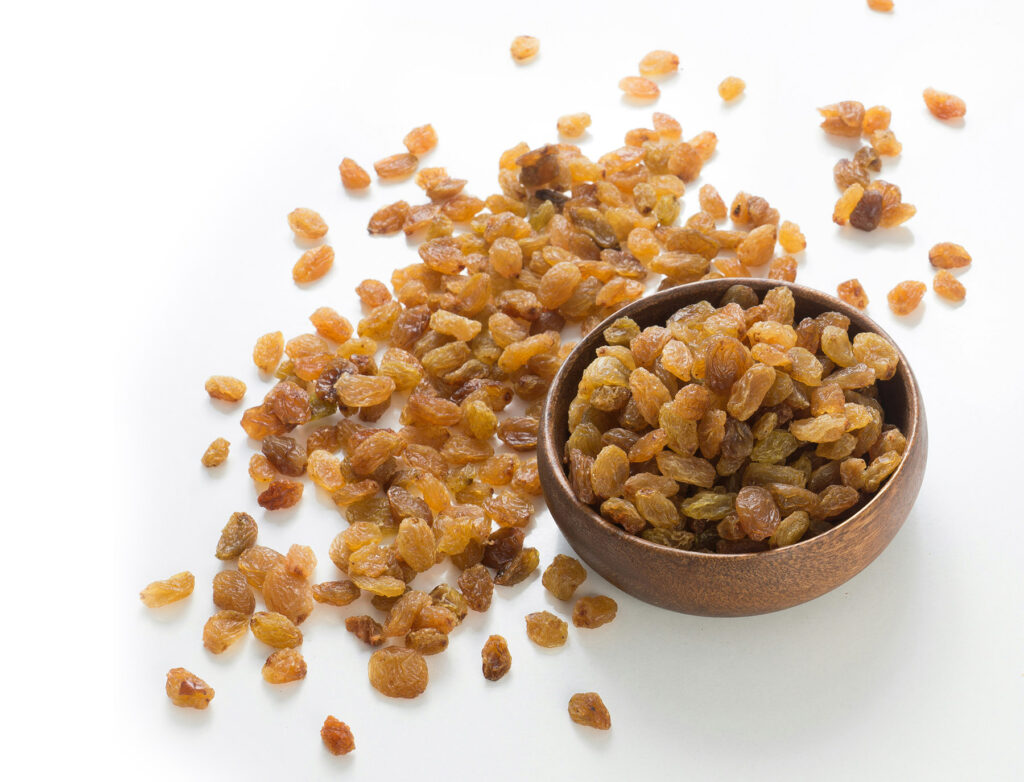
What are popular ways to enjoy raisins, sultanas, and currants?
Raisins, sultanas, and currants can be enjoyed in a variety of ways, both as standalone snacks and as ingredients in a wide range of dishes. Here are some popular ways to enjoy these dried grape products:
- Snacking: All three can be eaten as a nutritious and convenient snack on their own. They provide a quick energy boost and are a healthy alternative to candies or other sugary snacks. They are also fantastic when incorporated into trail mix along with nuts, seeds, and other dried fruits for a balanced and satisfying on-the-go snack.
- Baking: Raisins, sultanas, and currants are common additions to baked goods. They can be used in cookies, muffins, scones, cakes, bread, and pastries to add sweetness, texture, and a burst of flavor. Classic examples include oatmeal raisin cookies, fruitcakes, and currant buns.
- Breakfast: Sprinkle them on top of cereals, oatmeal, yogurt, or in your morning pancakes or waffles for added sweetness and nutrition.
- Salads: Use all 3 to enhance the flavor and texture of salads, especially fruit salads, couscous salads, or mixed greens. They can complement both sweet and savory combinations.
- Chutneys and Sauces: They are often used in chutneys, relishes, and sauces to provide sweetness and depth of flavor, particularly in Indian and Middle Eastern cuisines.
- Rice Dishes: In many cultures, raisins, sultanas, and currants are incorporated into rice dishes like pilaf or biryani, adding a delightful contrast to the savory rice.
- Moroccan Tagine: Sultanas and other dried fruits are key ingredients in Moroccan tagine, which contribute a sweet and tangy element to the dish’s complex flavors.
- Stuffing: All 3, as well as other dried fruits, are often used in stuffing for poultry, pork, or vegetarian dishes, offering a sweet and fruity dimension to the stuffing.
Whether used in sweet or savory recipes, raisins, sultanas, and currants provide a touch of natural sweetness, texture, and a burst of flavor that can enhance a wide range of culinary creations.
Which dried grape variety do you prefer? Let us know in the comments!

